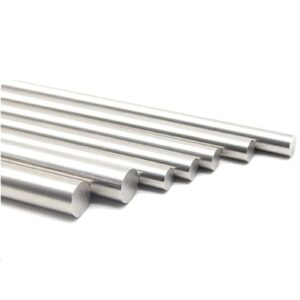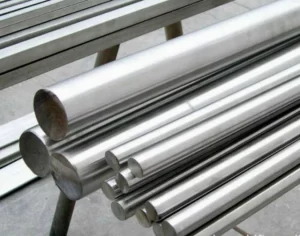In the realm of materials engineering, making the right choice can spell the difference between success and failure. Among the vast array of options, the 316 stainless steel round bar emerges as a cost-effective yet high-performance material choice. This comprehensive guide navigates the intricacies of 316 stainless steel, shedding light on its unique attributes, cost-effectiveness, and the multitude of industries where it offers unparalleled value.
Demystifying 316 Stainless Steel What Makes 316 Stainless Steel Special?
What Makes 316 Stainless Steel Special?
At its core, 316 stainless steel belongs to the family of austenitic stainless steel alloys, distinguished by its exceptional chemical composition. This alloy typically comprises 16-18% chromium, 10-14% nickel, 2-3% molybdenum, and a blend of trace elements, all of which contribute to its remarkable properties.
Key Properties of 316 Stainless Steel
1. Impressive Corrosion Resistance
The hallmark of 316 stainless steel is its unmatched resistance to corrosion. This property is the linchpin of its cost-effectiveness, as it extends the lifespan of components and structures exposed to harsh environments. Industries such as marine, chemical, and pharmaceuticals rely on its durability.
2. High-Temperature Stability
316 stainless steel maintains its strength and corrosion resistance at elevated temperatures, minimizing the need for frequent replacements or repairs in high-temperature applications like industrial furnaces and exhaust systems.
3. Exceptional Strength and Durability
With a high tensile strength and outstanding toughness, 316 stainless steel endures heavy loads and harsh conditions, reducing maintenance costs in construction and structural applications.
4. Ease of Fabrication
Versatility is another cost-saving aspect of 316 stainless steel. It can be easily fabricated through various techniques, including welding and forming, reducing production time and labor costs.
Applications and Cost-Effectiveness
Construction and Architecture: Balancing Cost and Quality
316 stainless steel round bars play a pivotal role in construction and architecture, offering an ideal balance between cost and quality. Whether used in structural components, handrails, or decorative elements, it combines affordability with strength and corrosion resistance, reducing maintenance and replacement expenses over time.
Marine Industry: A Wise Investment
In the maritime sector, 316 stainless steel is a wise investment. While the initial cost may be slightly higher than some alternatives, its longevity and resistance to saltwater corrosion make it a cost-effective choice for boat fittings, marine hardware, and equipment exposed to the harsh marine environment.
Chemical Processing: Long-Term Savings
Chemical plants and laboratories often prioritize long-term cost savings, and 316 stainless steel fits the bill. Its resistance to corrosive chemicals minimizes the need for frequent equipment replacements, reducing downtime and maintenance expenses.
Food and Beverage Industry: Ensuring Quality and Savings
316 stainless steel is a preferred material in the food and beverage industry, where product quality and safety are paramount. Its corrosion resistance ensures product purity, reducing the risk of contamination and costly recalls.
Pharmaceuticals: Safeguarding Investments
In pharmaceutical manufacturing, the cost of equipment maintenance and product purity are significant concerns. 316 stainless steel safeguards investments by offering corrosion resistance and reliability, reducing the risk of costly production delays.
Automotive and Aerospace: Efficiency and Performance
Both the automotive and aerospace industries rely on the cost-effectiveness of 316 stainless steel. Its lightweight yet robust nature contributes to fuel efficiency and overall performance, ultimately saving on operational costs.
Medical Devices: Precision and Durability
In the medical field, precision and durability are non-negotiable. 316 stainless steel’s biocompatibility and corrosion resistance reduce the need for frequent replacement of medical instruments and devices, ensuring long-term cost-effectiveness.
Oil and Gas: Ensuring Reliability
In the oil and gas sector, where harsh environments are the norm, 316 stainless steel offers reliability and cost savings. Its resistance to corrosion in offshore platforms and pipelines minimizes maintenance and replacement costs.
Frequently Asked Questions (FAQ)
1. Is 316 stainless steel more expensive than other materials?
While the initial cost of 316 stainless steel may be higher than some materials, its long-term cost-effectiveness, thanks to corrosion resistance and durability, often outweighs the upfront expense.
2. Does 316 stainless steel require special maintenance?
No, 316 stainless steel typically requires minimal maintenance, reducing long-term operational costs. Regular cleaning and inspections are usually sufficient to maintain its performance.
3. Can 316 stainless steel be used in cost-sensitive projects?
Yes, 316 stainless steel can be a cost-effective choice in projects where long-term durability and corrosion resistance are essential, as it reduces maintenance and replacement costs over time.
4. Are there cost-effective alternatives to 316 stainless steel?
While there are alternatives, 316 stainless steel’s unique combination of properties, including corrosion resistance and durability, often makes it the most cost-effective choice in various applications.
In conclusion, 316 stainless steel round bars offer a compelling case for cost-effectiveness across a spectrum of industries. Their unique properties, including corrosion resistance, high-temperature stability, and ease of fabrication, translate into long-term savings and reduced operational costs. Whether you’re building a skyscraper, outfitting a ship, or manufacturing pharmaceuticals, 316 stainless steel proves that quality and cost-effectiveness can coexist seamlessly, making it a material choice that stands the test of time and fiscal scrutiny.

